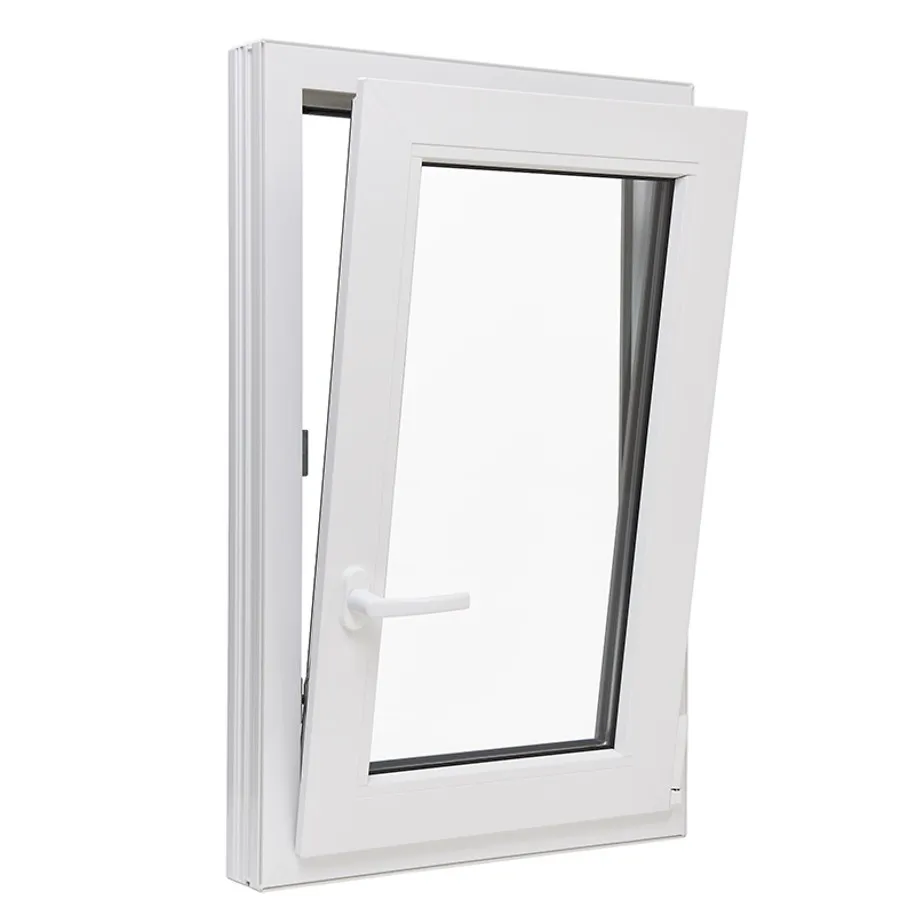If you want to know about the climate specific design principles or sustainable building design or hybrid cooling system, please click the link.
Window design guideline for non-conditioned/mixed mode buildings. The following may be considered in selection of type of windows.
1) Horizontal pivot windows

- These produce very effective ventilation because large open areas are created at a separation equivalent to the window height.
- Air will tend to enter at the lower level and exit via the top of the window.
- These are easily adjustable to provide control of the ventilation rate.
- These are often used in taller buildings, as both sides of glass can be cleaned from the inside of the building with ease.
- The main disadvantage of this type of window is that, when opened, the top of the sash interferes with the curtains.
2) Vertical pivot windows

- These are less efficient than horizontal pivot windows because the open area is uniformly distributed throughout the height of the window rather than concentrated at the extremes; but these can work well in combinations.
- There is an advantage that these can be both opened and closed by pushing and are easy to clean from the inside.
- When fully open these offer a safe vertical barrier.
- The inward opening section may interfere with curtains when fully open.
3) Casement windows

- These offer the same advantages as vertical pivot windows but are susceptible to gusts.
- The most commonly used are double sided hinged outward opening windows which have great versatility with respect to air flow control.
- Most casement windows are designed to open outwards, which poses a problem for installation of window air conditioners.
4) Top/bottom hung windows

- These are less effective as ventilators than pivot windows as all the opening area is concentrated at one end, the top or bottom of the window.
5) Sliding windows

- These have similar characteristics as horizontal or vertical pivot windows.
- Sliding windows are easy to open; these slide to the side instead of having to be pushed inside/outside.
- A good seal is important in reducing draughts and energy loss when closed.
- Cleaning the inside of slider windows is easy, but cleaning the outside may be difficult.
6) Tilting top vents

- These provide smaller opening areas than the other systems as these occupy only a relatively small proportion of the window height.
- However, these can provide good draught-free ventilation, especially in cross-ventilation mode.
- The inward opening function of tilt and turn windows limit the available space.
- The window may also be provided with fixed/sash/ sliding/roller insect screens to allow fresh air without the inlet of mosquitoes and other insects through openable windows.
- As compared to air-conditioned spaces, the window design in non-conditioned/mixed mode buildings takes a different approach.
- The glazing system for windows in non-conditioned/mixed mode spaces is usually single pane/panel glazed units as the windows will be opened to allow ventilation.
- Thus there is less relevance to install double glazing units with low SHGC and U- values.
- However, in the non-conditioned/mixed mode buildings the shading device plays a crucial role in the thermal performance of a window.
- Windows on facades, for different orientations, should be provided by the shading devices which can cut the direct incident solar radiation for the critical solar angles.
- In the non-conditioned buildings/mixed mode buildings, penetration of direct solar radiation needs to be regulated.
- The critical Horizontal Solar Angle (HSA) and Vertical Solar Angle (VSA) (see Figure below) for fenestrations located on the cardinal directions should be regulated by designing appropriate shading devices.

- The horizontal solar angle at critical hours can be regulated by the vertical fins provided as external shading devices.
- The vertical solar angle at critical hours can be regulated by the horizontal fins provided as external shading devices.
- The maximum permissible WWR on a facade should not exceed 60 percent.
- Window opening requirements for naturally ventilated low rise residential and office buildings include the following
- In order to allow outside air to enter the space, window openings should be oriented appropriately to optimize heat and solar heat gain.
- In order to facilitate cross ventilation, location of window openings should be located opposite to each other on walls parallel to each other.
- In order to achieve the required air change per hour in a given space, cross ventilation and stack ventilation mode of natural ventilation should be adopted.
- The external shading devices can be designed in various ways to stop the solar radiation entering through the window.
- Figure below shows the commonly used shading devices.
